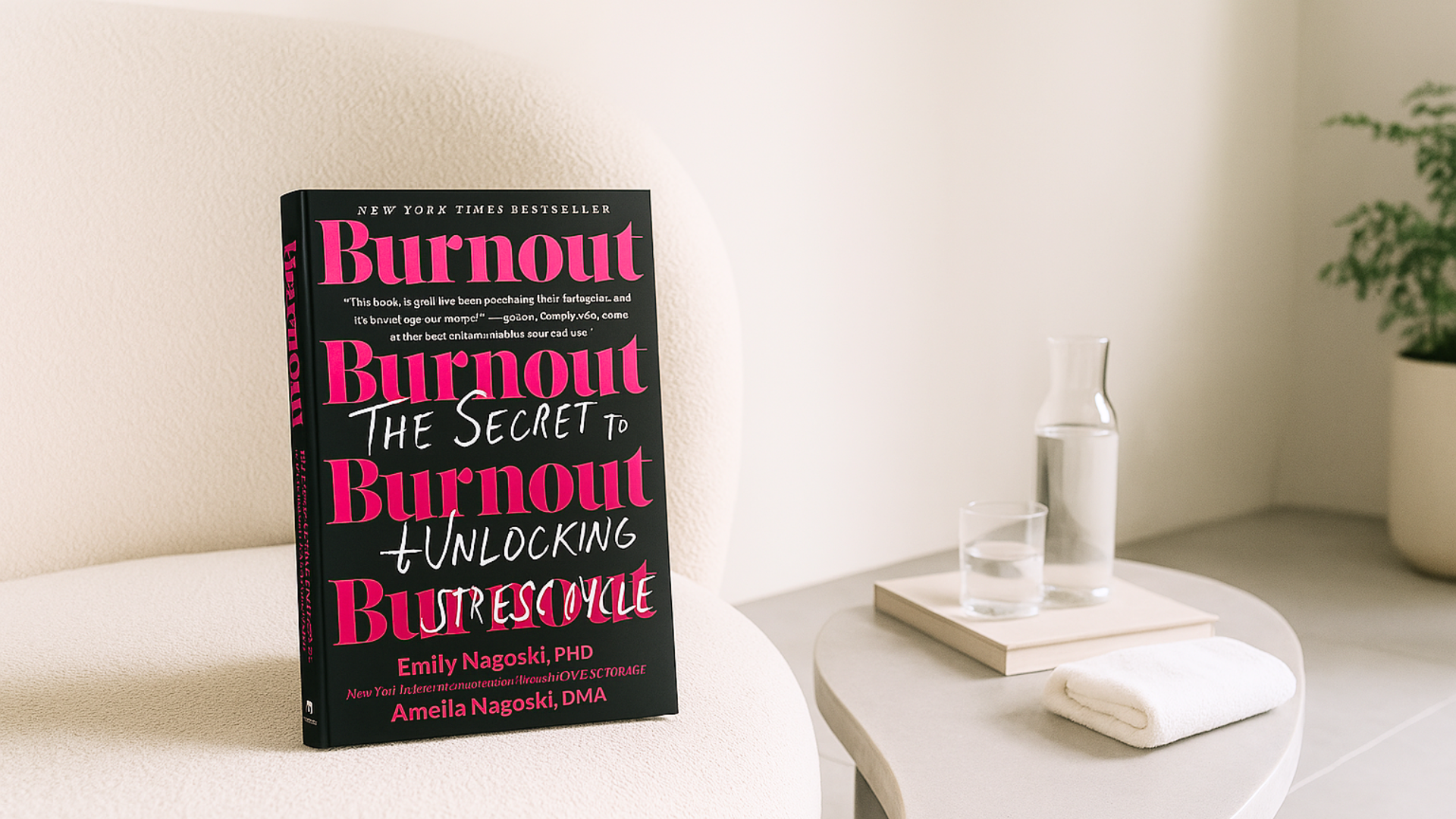Why Burnout Is the Book Every Overwhelmed Woman Should Read

Book Review: Burnout by Emily Nagoski and Amelia Nagoski
A science-informed, sister-led guide to moving through stress and reclaiming wellness
Burnout is more than a buzzword. For many women, it is a daily, embodied reality. In Burnout: The Secret to Unlocking the Stress Cycle, sisters Emily and Amelia Nagoski offer a grounded, compassionate, and research-informed approach to understanding and addressing chronic stress. They draw from neuroscience, psychology, and their own lived experiences to guide readers toward more sustainable wellness.
This book does not blame the reader. It does not suggest that exhaustion is a failure of self-care or mindset. Instead, it affirms that many of the stressors we face are systemic and ongoing. What we can do, the authors argue, is complete the biological stress cycle. This is something most of us were never taught.
What the book promises
Burnout sets out to explain why women, in particular, feel chronically tired, anxious, and emotionally depleted. It makes a clear distinction between stress and stressors. Stressors are the external triggers such as deadlines, arguments, or expectations. Stress is the body’s internal response. The key idea is that solving the stressor is not the same as resolving the stress.
The authors promise to show readers how to complete the stress cycle using simple, evidence-based strategies. At the same time, they explore the broader social context that contributes to burnout. This includes what they call Human Giver Syndrome. The book offers tools, and it also offers validation. That dual focus gives it depth and credibility.
What the book delivers
The core of the book introduces seven ways to complete the stress cycle: physical activity, deep breathing, positive social interaction, laughter, affection, creative expression, and crying. These are not framed as self-care luxuries. They are described as biological imperatives. These signals tell the nervous system the threat has passed.
The book’s structure is clear and conversational. Each chapter blends science, story, and humour. The authors include composite case studies based on real women. Characters like Julie and Sophie encounter pressure at work and home. These narratives help ground the research and give readers a relatable entry point.
Throughout, the authors combine clinical clarity with personal warmth. Emily brings expertise from her work as a health educator. Amelia adds perspective as a professional musician who experienced her own burnout. Their collaboration gives the book a distinct voice that is accessible, informed, and emotionally attuned.
Style and structure
The book is organized into three parts. The first covers the science of stress and the importance of completing the cycle. The second looks outward at the cultural dynamics that drive burnout, especially for women. The final section explores how to build resilience through rest, connection, and self-compassion.
Each chapter ends with a summary section, written in plain language, to reinforce the key ideas. These brief recaps make the book easy to return to and help readers remember practical steps.
The tone throughout is conversational, sometimes playful, but always respectful. The authors do not minimize the challenges readers face. Instead, they frame stress recovery as both a biological process and a human right.
Where the book shines
The strongest aspect of Burnout is its insistence that there is nothing wrong with you. If you are exhausted, overwhelmed, or emotionally worn down, you are not broken. You are likely experiencing the effects of unrelieved stress. That reframe alone can be deeply healing.
The concept of Human Giver Syndrome, adapted from philosopher Kate Manne, is especially helpful. It describes a cultural expectation that some people, especially women, are supposed to devote their lives to the care and comfort of others without asking for rest, boundaries, or reciprocation. By naming this dynamic, the authors make it easier to notice how it shows up in everyday life.
Another strength is the practical, accessible nature of the tools. You do not need a retreat or a long vacation to apply these ideas. You can walk, cry, hug someone you trust, or breathe deeply for one minute. The book treats these practices not as indulgences, but as essential resets for the nervous system.
Light limitations
Although the book speaks to many people’s experiences, it focuses primarily on cisgender women. The authors acknowledge this early on and are clear about the scope of their work. Some readers may wish for more inclusion of other gender identities, racial experiences, or the impact of chronic illness and disability on burnout.
The informal tone, while inviting, may not appeal to readers who prefer a more clinical or traditional structure. Pop culture references and sibling-style banter are part of the book’s voice. Some readers may find that distracting. However, this same tone helps make complex science more approachable.
The book is strongest in its early chapters. Toward the end, the content becomes broader, exploring joy and meaning. While still valuable, these sections may feel less focused than the earlier material.
Final thoughts
Burnout is a deeply affirming and practical book. It acknowledges the weight many people carry and offers realistic ways to feel lighter. Its message is both scientific and human. Our bodies need to complete the stress cycle, and we are allowed to do that in simple, nourishing ways.
This book is especially helpful for women who feel overextended, under-supported, or caught in patterns of people-pleasing. It offers not just strategies, but language for understanding why those patterns exist and how to interrupt them.
For anyone feeling trapped in survival mode, Burnout is a reminder that healing is possible, even in small moments. You do not have to fix everything. You just need to give your body what it needs to let go of the pressure it is holding.
Highly recommended for overwhelmed women, especially those in caregiving or high-pressure roles, who need validation, practical tools, and a science-based approach to breaking the burnout cycle.